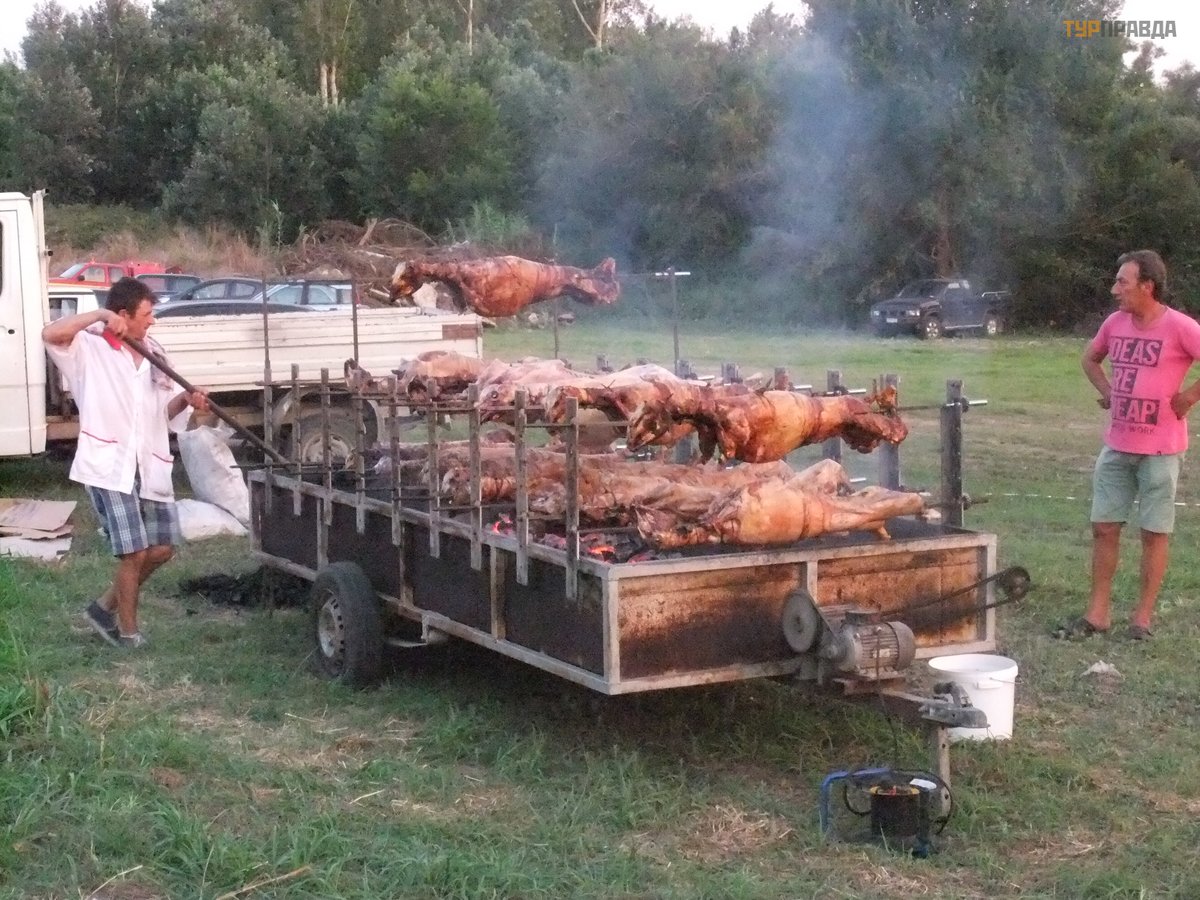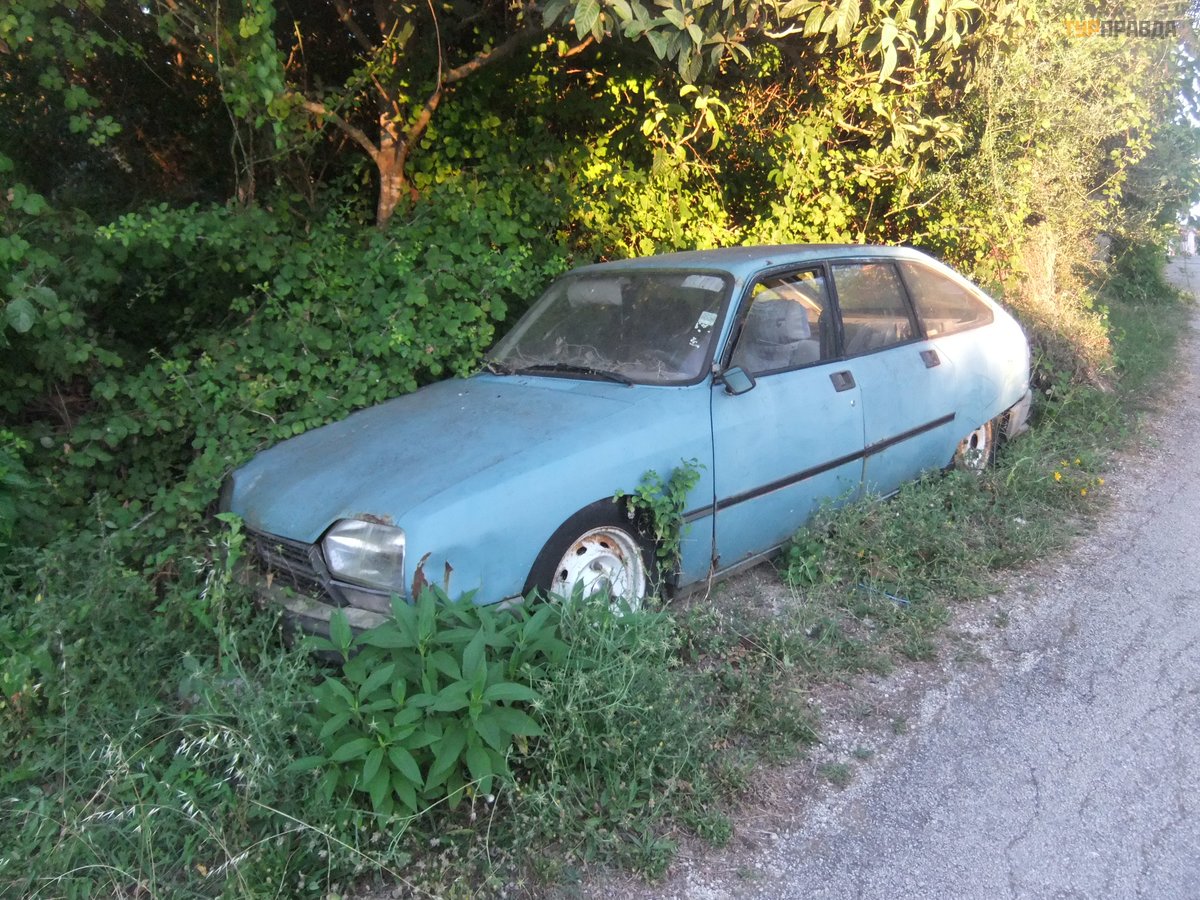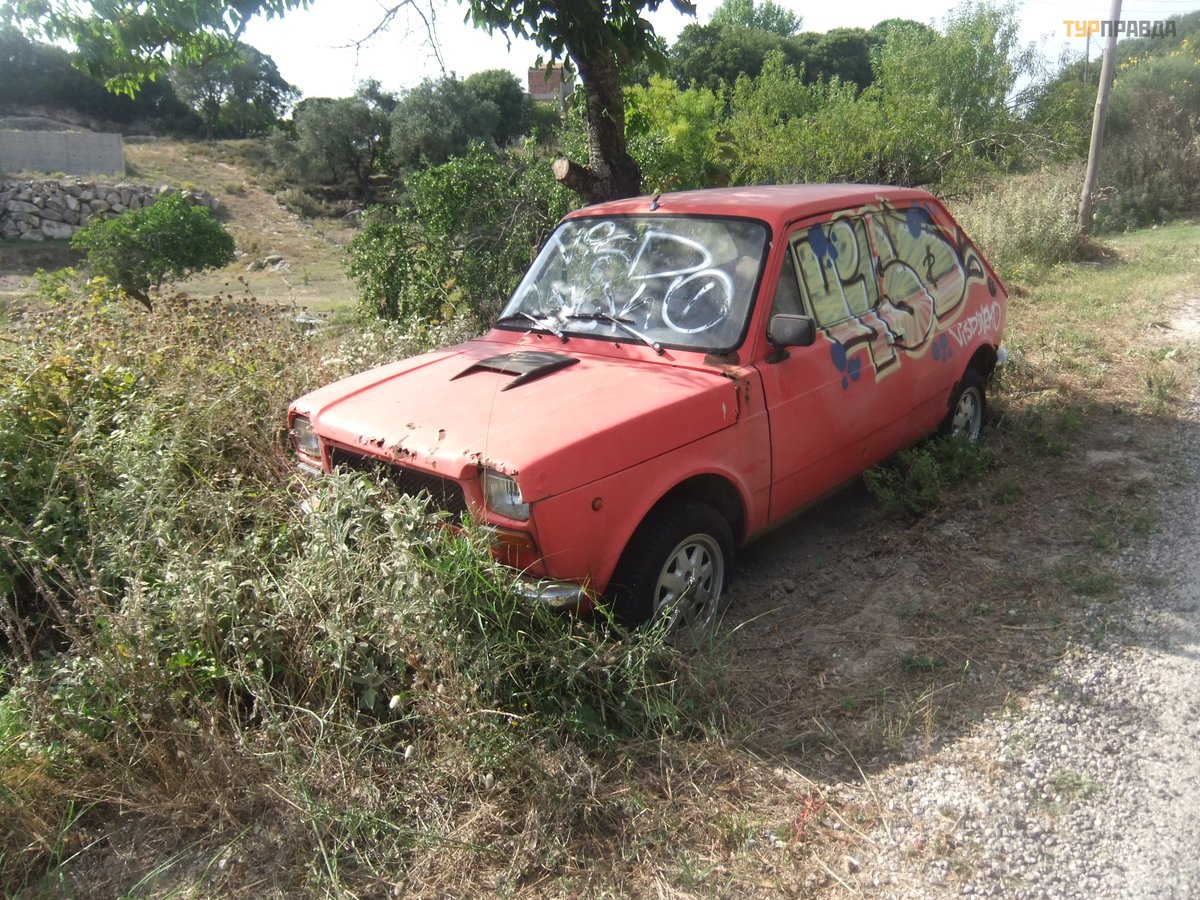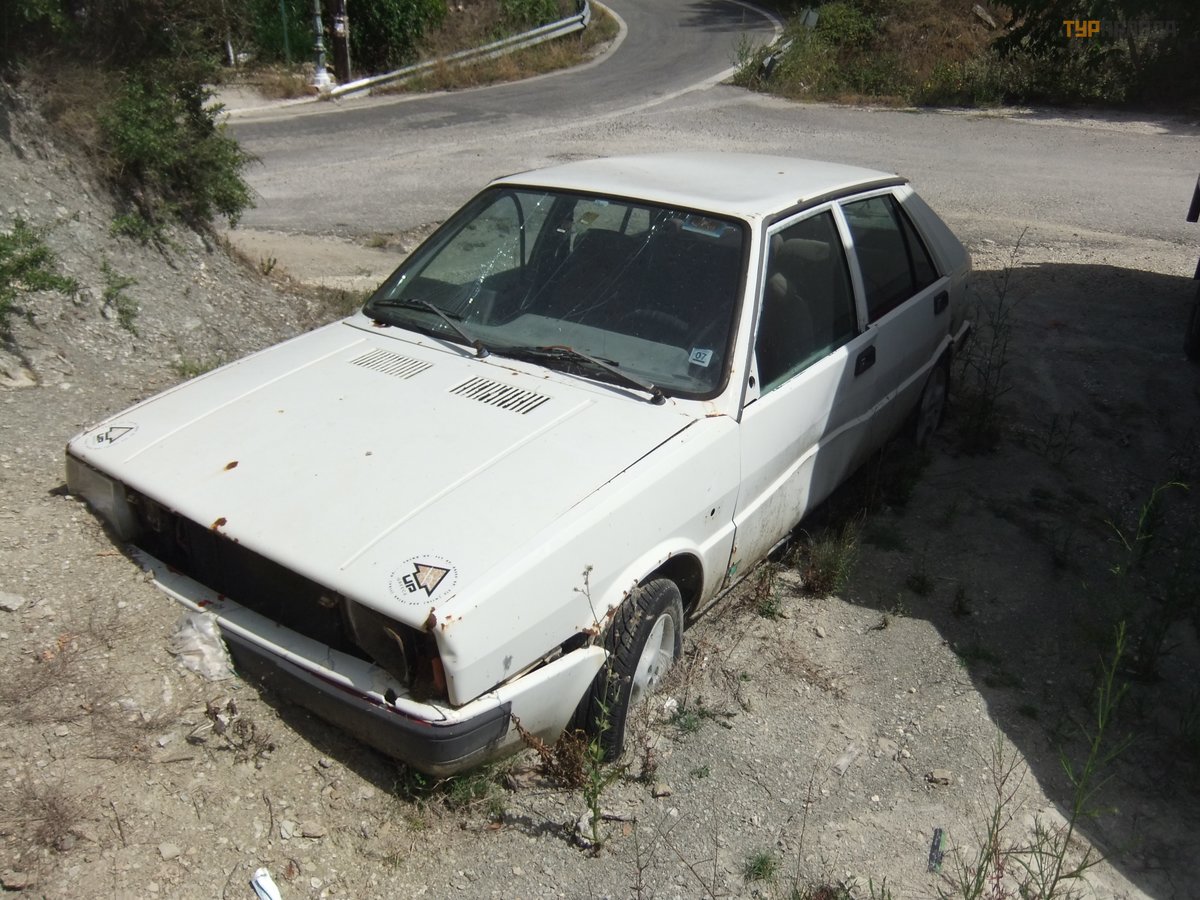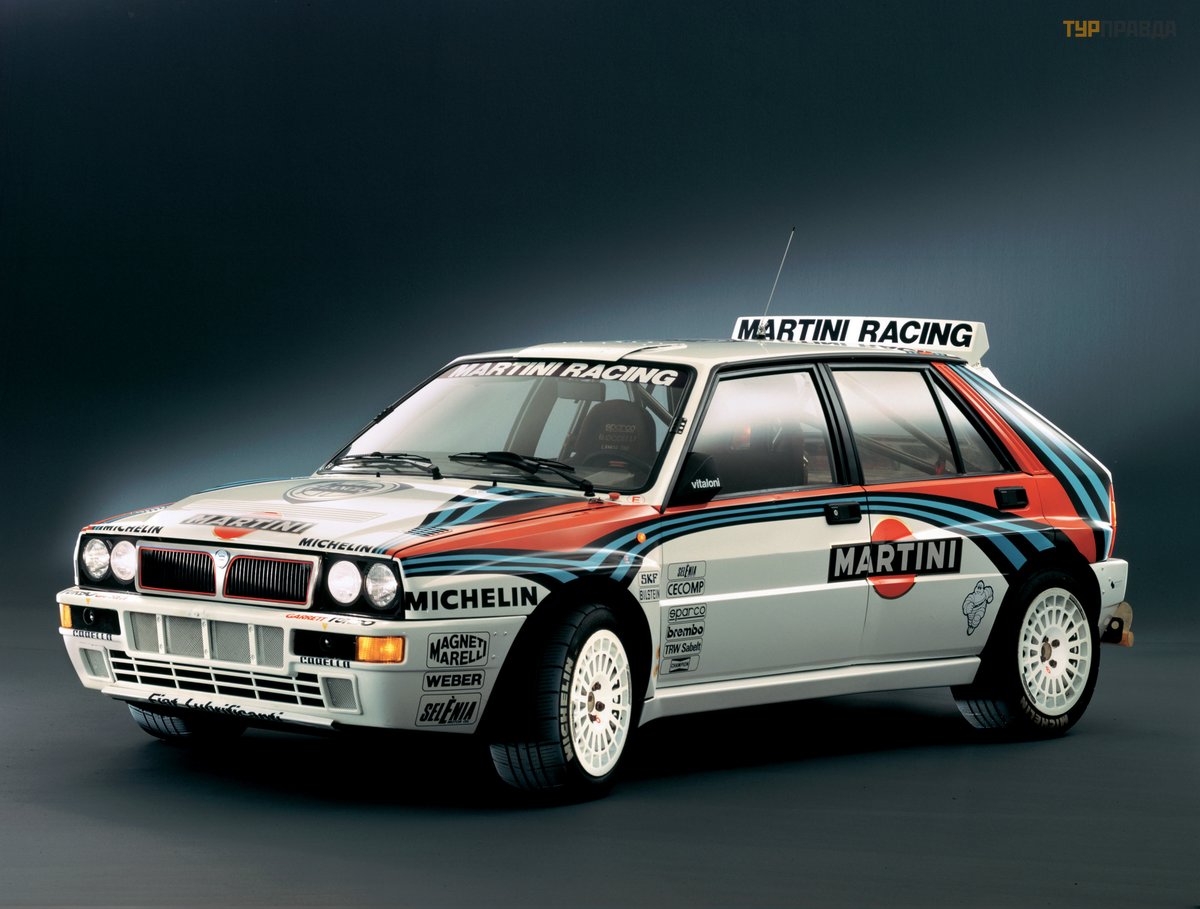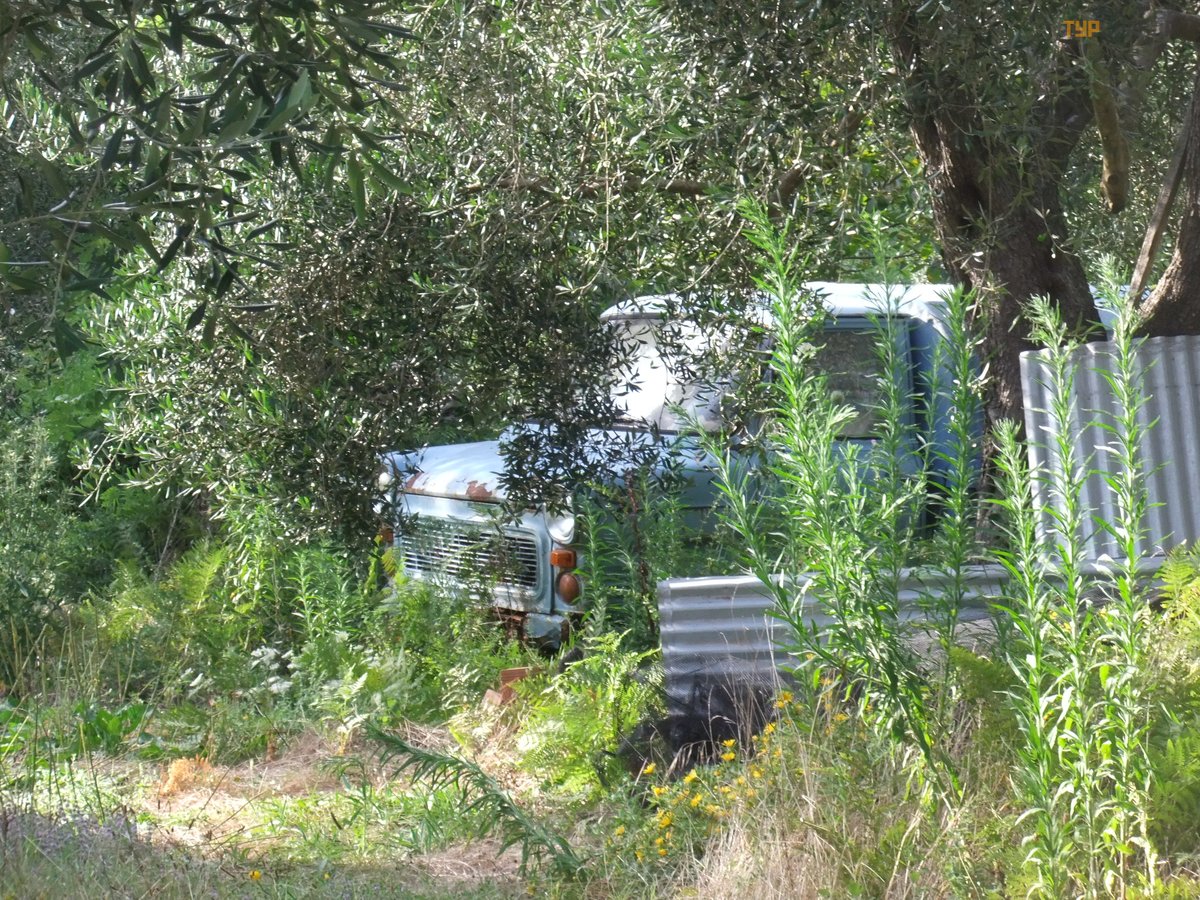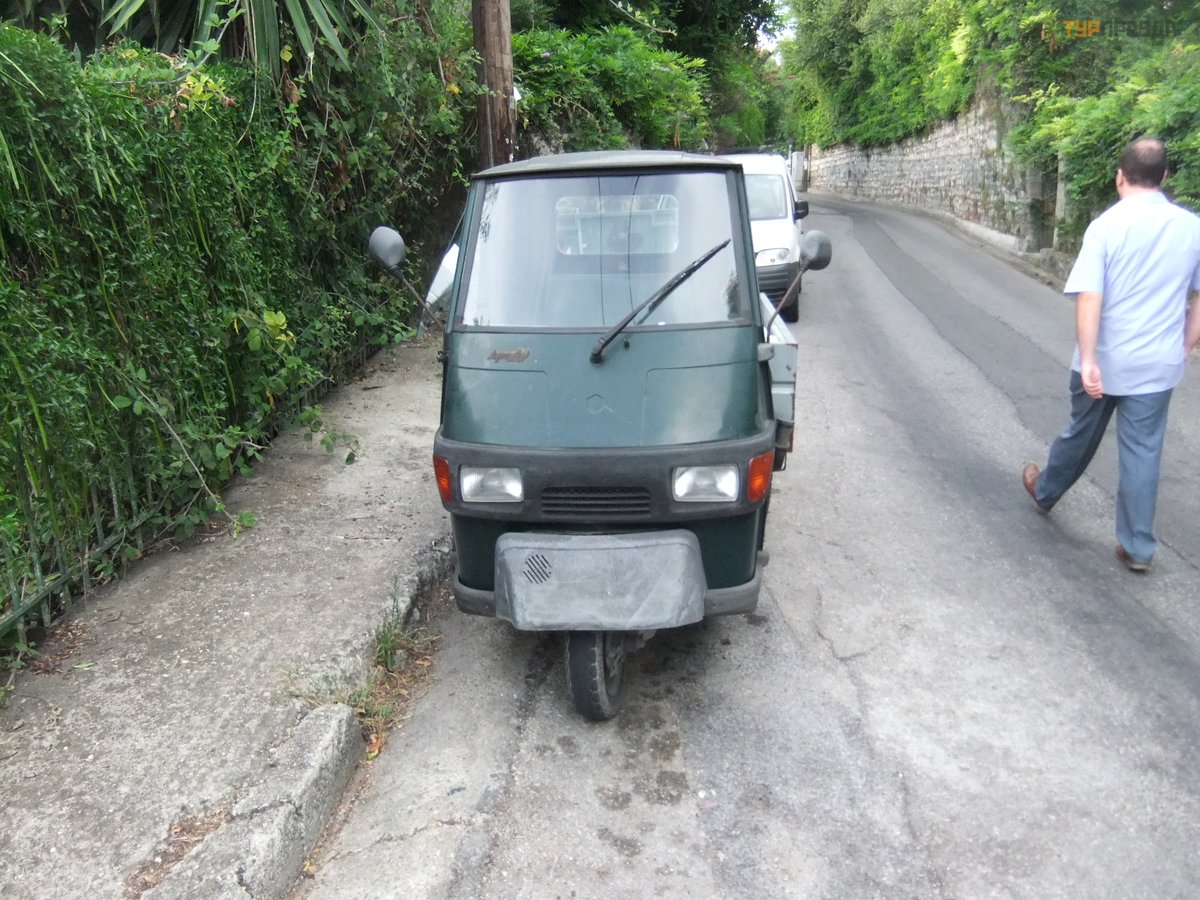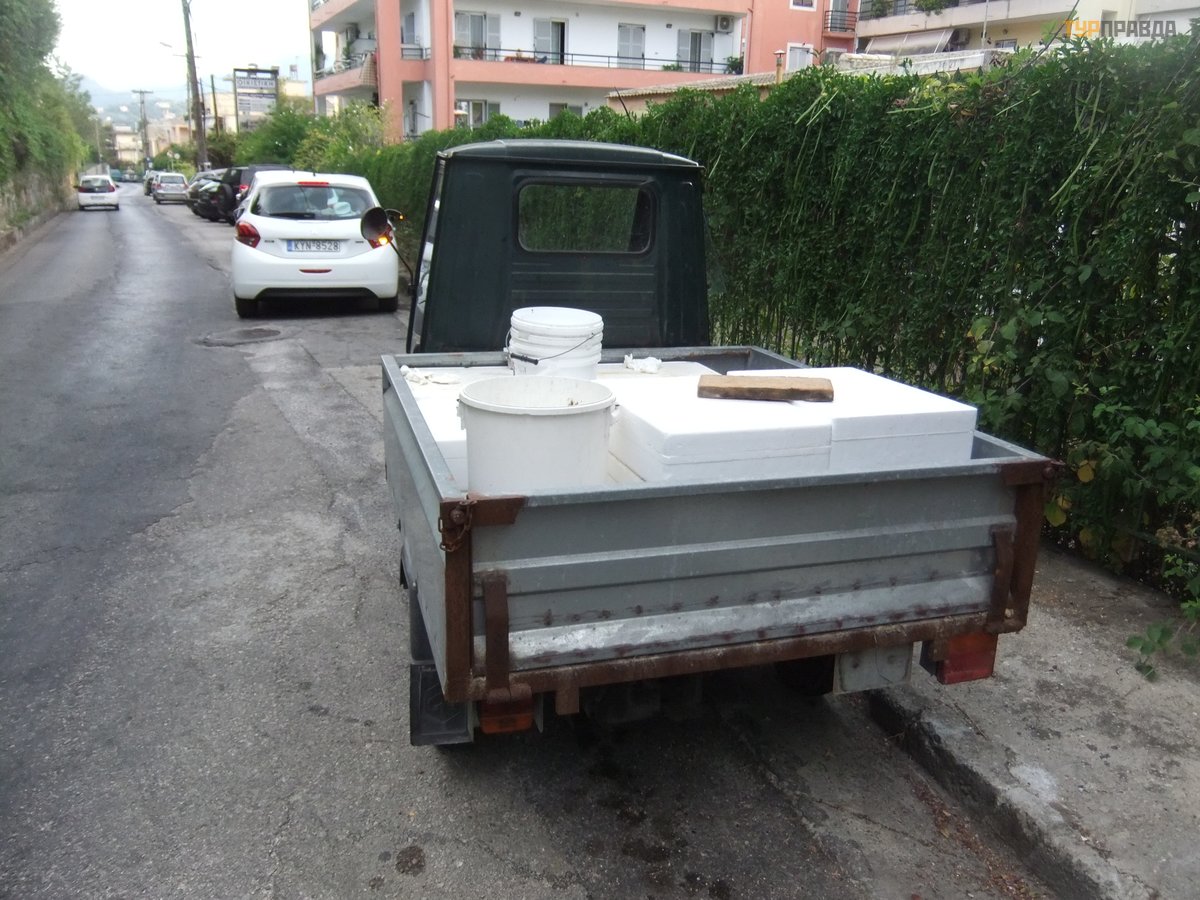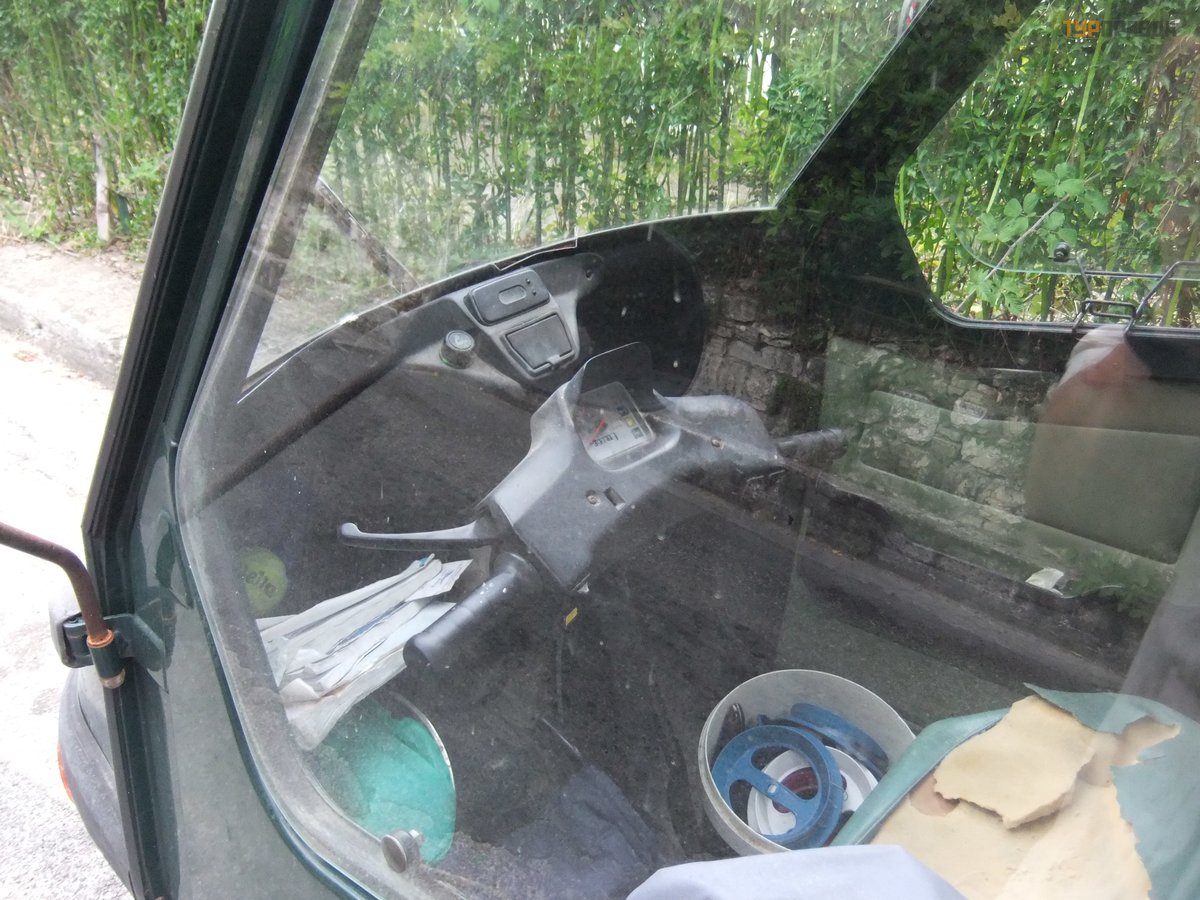Old cars of Corfu. The second part
Continuation of the story for those who love real iron cars, for which the mileage is 100 thousand km. just the end of the run.
Start here >>>
MINI MOKE . Produced in the UK from 1964 to 1968. Austin Mini was taken as the base. The British car class "Beach buggy" was not successful for climatic reasons. But in Australia it was released until 1981. Then the production moved to Portugal, where it was produced until 1993.
Bare metal. Sharp corners. Clearly, the designers did not bother with safety. In the center is the classic frying pan of the Minikian speedometer.
The car could be bought both in the assembled state and in the form of the so-called. "Kit Kara". That is a set of parts in a box. The price depended on the degree of assembly of the car
In 1978, a regular Austin Mini cost DM 7.490 in Germany. MINI MOKE kit car in the most incomplete configuration cost 6.500 DM. It cost 13.800 DM in finished form.
Mazda T600. Start of production in 1931. This particular modification was produced from 1957 to 1974. Inexpensive, reliable three-wheeled truck. What is important - it takes quite a lot of cargo, and taxes are not like from a car, but like from a motorcycle. Saving! This unit is running great. It was used by grandfather and his grandmother for a village holiday. Two teenage grandchildren were sitting in the back.
Grandfather came here. This is preparation for the holiday in honor of Paraskeva Pyatnitsa - the patroness of several surrounding villages. The photo doesn't really deviate from the topic. Also a vehicle of its kind.
The skewers are rotated by a complex chain transmission from an electric motor.
Citroen GS. Years of production 1970 - 1980. Car of the year in Europe in 1971. At the time of the start of its production, it was the most technologically advanced car in its class in the world. A little less than 2 have been released. million
For me, despite its considerable age, the car looks quite modern.
Unfortunately, not on the move.
The famous single-spoke Citroen steering wheel. The view is unusual, but I think that it is not very convenient to steer like this.
FIAT 127. Years of production 1971 - 1987. Car of the year in Europe in 1972 (Somewhere in South America it was produced right up to 1996) Chief designer - Dante Giacosa, whom I already wrote about in the first part. It was he who sculpted the FIAT 500, based on which our hunchbacked Zaporozhets was created.
Definitely not on the move.
Because the steering wheel was stolen. But they left the tape recorder. Not our way.
Toyota Corolla, around 1975. (I don't remember exactly). On it, the dedugan came to tea, wine drinking and drinking under a sprawling olive tree with other dedugans. I saw him there every day. I talked to him. This is his first, and apparently the last car. He bought it on his twenty-fifth birthday. Not going to change. What for? State of the new machine.
And the salon is not smoky. (Although unlikely. Greece is a smoking country).
(Here's a fucking bogeyman!!! ! My car is 5 years old, and the steering wheel is worn and looks worse than the steering wheel of this antediluvian Corolla. )
Lancia Delta first generation. 1979 - 1994. Super car. Dream. Orgasm. Delight. Delta - expensive, nervous, sassy. But serious. Her version of the Lancia Delta Integrale won the rally class wherever it was possible to win.
Designed by Giorgetto Giugiaro. This man in design is like Plisetskaya in ballet.
And such an inglorious end for this particular instance. Got hit by a mud slide. Death is unheroic. Kind of like dying from poisoning with expired sausage.
This is what she looked like.
Ford Taunus TS. Years of production 1970 - 1976.
Management of the West German division of Ford Motors Co. decided to create a so-called. world car. So that he would be interesting to both the German and the Englishman, and the Indian, and the Argentinean. They succeeded. The Taunus was a reliable, beautiful and inexpensive car. Its design was made by such a monster as Maestro Luigi Colani. (I won’t write about him because you can’t write about Kolani briefly).
It was a resounding success. Million sales. And the idea of not hanging the Ford emblem on this car looks all the more strange. The coat of arms of the city of Cologne flaunts on the false radiator. It is not clear what motivated the creators? Were ashamed of the parent company or proud of our city....
Each of us has a familiar grandmother who, for good measure, calls any minibus RAFIK. So.....
Ford Transit second generation. 1965 - 1978. The most popular minibus and van in Europe. It was (is) so popular that in some European countries people call all minibuses Transits. According to the Top Gear show; English police reported that in the 1970s, 95% of all robberies in which criminals used a car involved this type of Ford Transit.
Piaggio Ape TM . Italian three-wheeled truck based on a scooter. Produced since 1948 until now with changes, of course. If in the forties it was bought out of poverty, now it is sometimes the only transport that can drive through the narrow European streets.
Despite its small size, it can take a sufficient amount of cargo. In the cockpit, although there is a motorcycle steering wheel, the car seat is double. There are even comfort elements in the form of an ashtray and a wiper.
The previous modification did not have a boring abbreviation in the name, but a proper name. Listen to how it sounds - Piaggio Ape Kolesino. All sorts of Pinocchio and Chippolino immediately come to mind.
Volkswagen T 2. Years of production 1967 - 1979. More than 2.5 million cars were produced. things. Reliable, roomy, relatively comfortable. He was very fond of the hippies. Many people mistakenly call the Volkswagen T1 a hippymobile. This is not true. T 1 really had a more hippie appearance, but his character was rather capricious and reliability was low. Yes, and the first hippies appeared in the late sixties, early seventies, when the T 1 had long been discontinued.
Daihatsu Taft. 1974 - 1984 . Tiny, seemingly frivolous SUV. Only he has a frame, springs, solid axles, a plug-in all-wheel drive and a lowering. An ideal option for those who need a real rogue in a compact size at a low price. This device traveled along the coast and filled oxygen cylinders for scuba divers.
Peugeot 305.1977 - 1994. French response to Volkswagen Jetta. Very beautiful and balanced car.
Unfortunately, not on the move.
Ford F-600. Start of production - fifties. The most interesting unit for us. The fact is that this truck served as the basis and example for our designers when creating the legendary ZIL 130. The Ford engine was also almost copied. The design of the 130th also at first almost repeated the forms of Ford, but then the designers realized it and did it a little differently.
It looks like the old man is almost on the move.
Next are two strange unidentified vehicles. One of them is all wheel drive. What it is, who it is, I don't know. But both of these pepelats are on the move. I met him in a completely remote village, where the main occupation of the villagers was the cultivation of kumquats. So, for myself, I called them Kumquatmobiles.
That's all. There were a lot of photos of pickups. Corfu is generally a reserve of pickups of all brands and ages. But they are almost identical from the face. So I won't post it.
These cars are the same attractions as, say, a beautiful palm tree. Or historical stones. But for me and for people like me, these cars are much more interesting than palm trees and stones.



